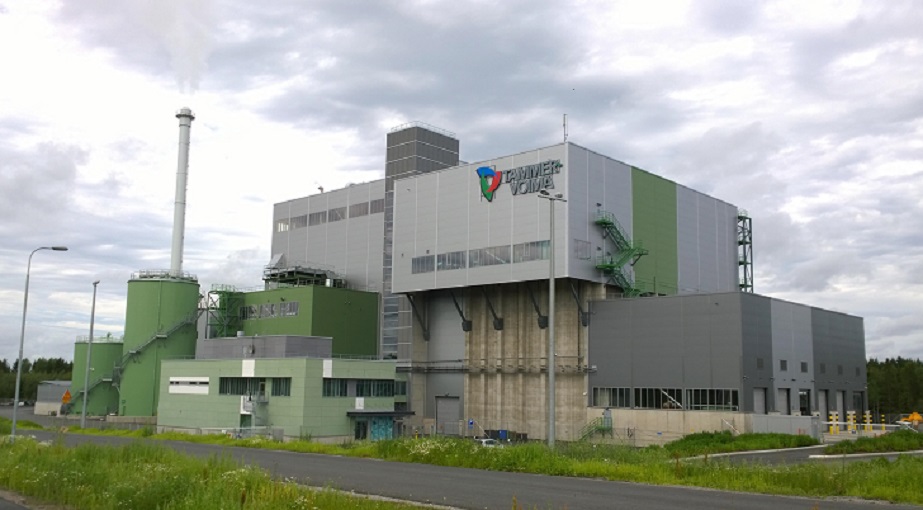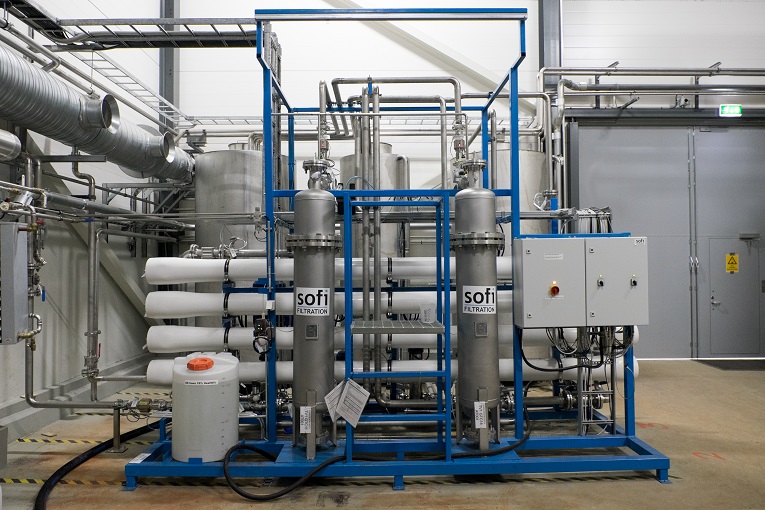

A waste-to-energy plant in Finland incinerates 160,000 tonnes of municipal solid waste annually and is equipped with the latest technology. Yet, it was producing excess amounts of flue gas condensate water until a water filtration specialist found a solution.
The Tammervioma's waste-to-energy plant in Finland has the latest state-of-the-art technology, including a semi dry system scrubber to purify the flue gas and a water condenser to condensate the flue gas humidity into liquid water and therefore increase the plant energy output.
The plant’s performance has been good, conforming to emission limits, with actual emissions less than 1% of the limits set on its environmental permit. In addition, partly due to the smooth operation of the plant, waste fees in the Tampere region are the lowest in Finland.
Even though the plant’s performance was outstanding in terms of its emission purification and energy efficiency, the plant operator faced a challenge with the excess amount of flue gas condensate water. Water generation was designed for 7–17 m3/ hour, and the maximum temperature was up to 85˚C. The total suspended solids of the water varied between 10 and 20 mg/l whereas the conductivity was 400–2,500 micro-siemens/cm.
Due to the characteristics of the water, discharging it was out of the question. Condensate water generation formed a bottleneck, preventing the operator from increasing the plant capacity. The operator wanted the water conductivity to be under 200 µS/cm so as to be able to re-use the water in the process and the water needed to be treated in high temperatures to allow the maximum heat recovery.
Solving the challenge The plant operator contacted Finnish water filtration technology specialist Sofi Filtration to solve the issue regarding the excess amount of condensate water. Sofi’s technical team made a model of the water purification system and tested Sofi Filtration’s technology to treat this specific type of water. First, a 50-litre sample of condensate water was sent to Sofi’s laboratory in Espoo.
The test run was performed with the water and the results were positive. Sofi Filtration was able to remove the majority of the suspended solids, while the self-cleaning system of the filter, which consists of ultrasonic cavitation and compressed air assisted water backpulse, was able to keep the filter element clean of dirt and particles.
Next, a small-scale Sofi pilot filter was tested in the actual setting of the waste-to-energy plant. The test confirmed Sofi’s technology was successful and the customer was able to feel secure that this specific technology was suitable to solve the challenge of excess amounts of condensate water.
Turnkey solution Sofi Filtration provided a turnkey solution to treat the condensate water so that it can be re-used in the process. The system consisted of a Sofi Filter system as a pre-treatment unit to remove the suspended solids and a reverse osmosis unit to reduce the water conductivity according to the customer’s requirements. Two Sofi SF1000 microfilters that acted as a pre-treatment system were equipped with sintered metal mesh elements and the filters included a self-cleaning ultrasound system.
A periodic ultrasonic pulse loosened particles which were stuck in the element’s surface and a backwash combined of air and water flushed the particles away from the system. Reject water was fed into the lower water circulation area of the scrubber whereas the permeate water was directed to a reverse osmosis unit.
The reverse osmosis unit consisted of four pressure vessels each with four 8040 high temperature membranes. The system also had an anti-scalant dosing system to prevent the inorganic scaling of the membranes and concentrate recirculation to increase the velocity of concentrate water on the reverse osmosis membrane surface and therefore reduce the fouling.
The Sofi Filtration process which consists of a microfilter and reverse osmosis purifies approximately 75% of the condensate water so that it can be re-used. The permeate water is free of solid particles and the water conductivity is around 80 µS/cm which is well below the limit of 200 µS/cm set by the customer.
Purified water The purified water is used as a make-up water in the district heating network. Water is purified, deaerated and fed into the heating network at around 80˚C, which allows efficient heat recovery without extra investment in heat exchangers. In addition, the customer doesn’t need to add any municipal water into the process, saving further costs. Energy consumption for the water purification unit is approximately 3 kWh per cubic meter of purified water. For comparison, if water is heated from 20˚C to 80˚C to be fed into a district heating network, the heat energy consumption would be approximately 70 kWh per cubic metre of water.
The customer has been very satisfied with the performance of the Sofi Filter and the reverse osmosis unit. The water purification system not only solved the issue with excess condensate water, but also provides make-up water to the district heating network and increases the power plant energy output by 5–10%. The customer estimated that the payback time of the whole system has been less than one year.






